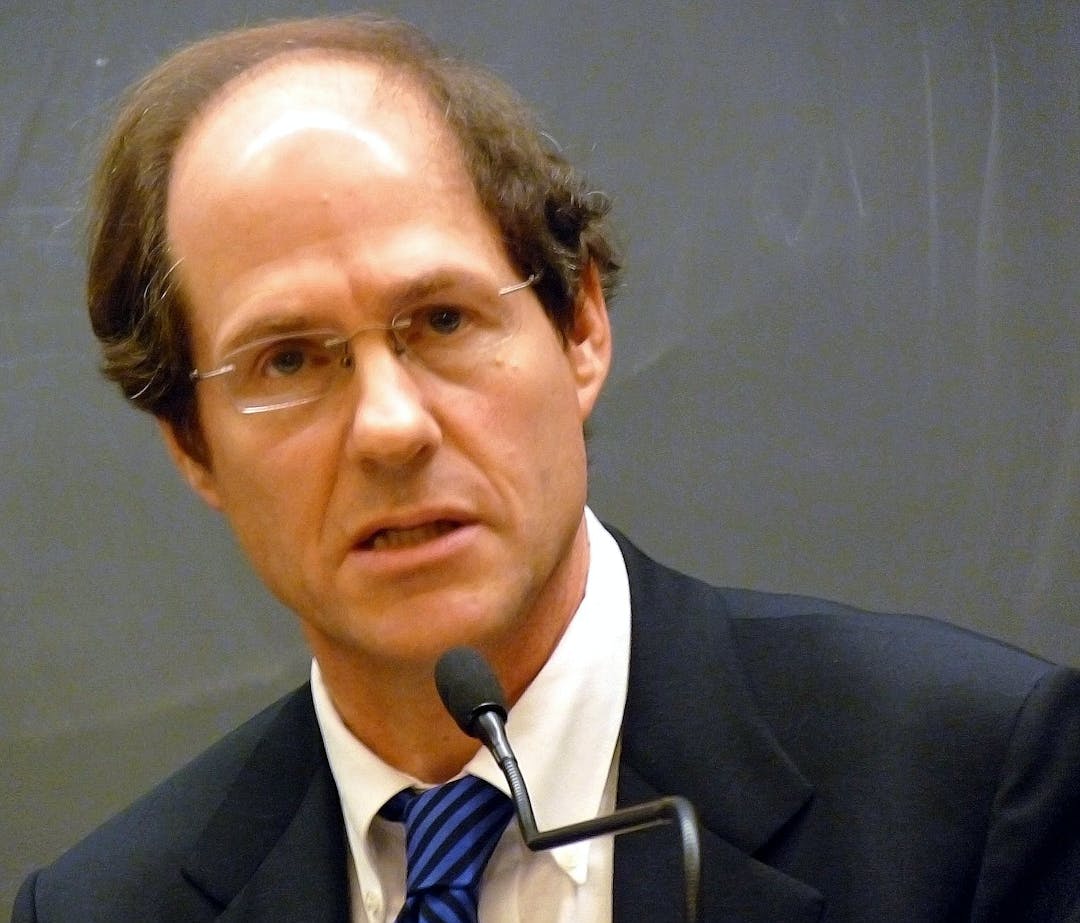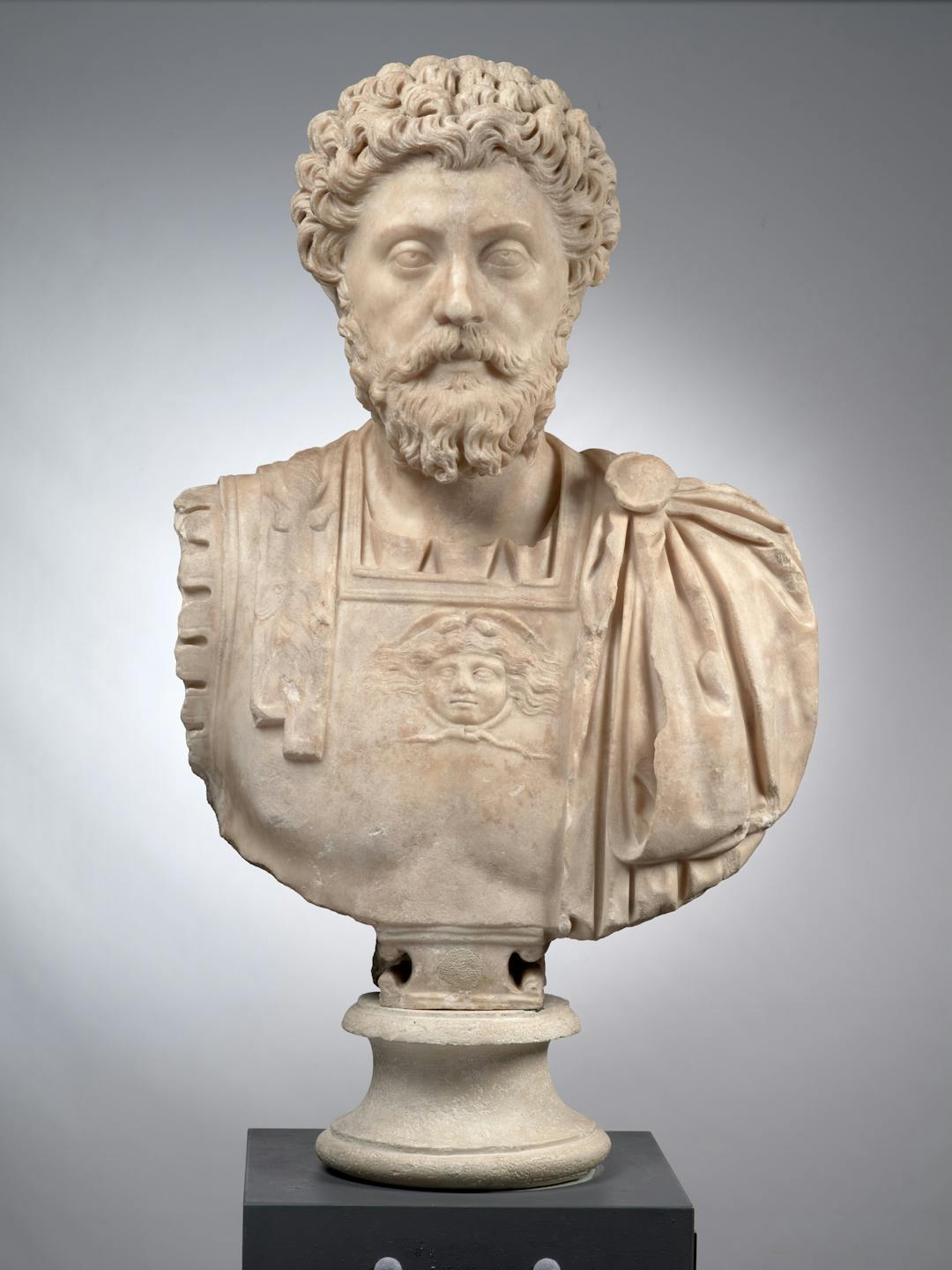Matthew Rabin
A Pioneer of Behavioral Economics
Intro
Matthew Rabin is one of the most important names in behavioral economics. Beginning his academic career in the 1990s, Rabin has consistently been an open advocate for behavioral economics. He understands that traditional economics, whilst having its uses, is still severely limited when it comes to explaining how people actually act instead of how they should act according to rationality.
As a result, Rabin has spent his career trying to better understand economic behavior by researching the psychological causes behind the fact that people veer from making decisions that maximize utility. Thanks to Rabin’s relentless investigation as to why anomalies exist in research based on traditional economics ideologies, he has been able to use psychological phenomena to address the fact that these anomalies are not just anomalies. He suggests that economists have long made excuses for these anomalies, which he famously termed “explain-away-tions”1 and tries to get to the bottom of real-life human behavior. His charisma and dedication to the field have enabled behavioral economics to gain credence and popularity.
Many young economists have been worried that studying these topics is a risky career path; they now have recognition that behavioral economics is no longer considered radical
– Richard Thaler discussing Matthew Rabin’s influence in popularizing behavioral economics and incorporating it into mainstream theory, in The New York Times.2
On their shoulders
For millennia, great thinkers and scholars have been working to understand the quirks of the human mind. Today, we’re privileged to put their insights to work, helping organizations to reduce bias and create better outcomes.
Ideas
Fairness
Rabin’s interest in fairness and how it might impact game theory was perhaps the first bold move that he made that garnered the interest of economists around him. Game theory, the study of how people make decisions when their actions are influenced by external sources, had based its theories on the belief that people acted according to rationality and self-interest.3 However, a number of studies have found contradictory evidence to this and instead suggested that people actually cared what the outcome of the other individual would be based on their actions. Most economists suggested that these studies were anomalies, but Rabin thought there was more to the story.
Rabin began sifting through the experimental psychology that showed that individuals deviated from rationality and self-interest in game theory. From this research, Rabin found that people often behaved according to reciprocal fairness: they are nice to people who are nice to them and mean to people who are mean to them. People do not always act altruistically, nor do they always act selfishly - a balance is struck through what is deemed fair behavior. He called the outcomes of motivations of reciprocity fairness equilibria.4
Rabin’s next move was to show how fairness impacted economic decision-making. In his 1993 paper, “Incorporating Fairness into Game Theory and Economics,” Rabin tried to develop a game-theory framework that took these motivations into account. In particular, he suggested that the following were facts:4
A: People are willing to sacrifice their own material well-being to help those who are being kind.
B: People are willing to sacrifice their own material well-being to punish those who are being unkind.
C: Both motivations A & B have a greater effect on behavior as the material cost of sacrificing becomes smaller (1282). 4
Rabin believed that fact A had adequately been demonstrated by studies that examined how much people were willing to contribute towards a public good where the individually optimum level is near 0%. These studies found that instead, people often contributed between 40-60% of the socially optimal level, but only if they felt like everyone was doing their part.4
Rabin believed fact B had been evidenced through the ultimatum game. The ultimatum game is one where two people have to split a certain amount of money. One person is a proposer and proposes how the money should be split between them. The other person is a decider, who either says yes or no to the proposer. If the decider says yes, they split the money accordingly, but if the decider says no, neither of them get money. In these situations, proposers don’t split it 100-0 and actually tend to make fair proposals.4 Additionally, deciders will often reject the offer if they don’t believe that it is fair, even if that means they lose money, which shows that self-interest isn’t the only factor in these decisions.4
Fact C had been demonstrated through a number of experiments that showed that Fact A and B were more prominent when the stakes were lower.4
Rabin’s new proposed game theory combined two forces: an economic one, material payoffs, and a psychological one, a concern for mutual fairness, that showed that humans’ decision-making is more complex than original game theory had suggested.3
Risk Aversion
Rabin has also provided some interesting theories to do with risk aversions. Since traditional economics is based solely on the belief that people make decisions according to what will maximize utility, when it came to wealth management, traditional economists believed that agents would maximize the expected utility of final wealth.5 Decisions that had a financial impact would therefore be made with the goal in mind to have the most wealth long-term, not just in the short term.
This expected utility model was often demonstrated through the following scenario:
If someone is offered a bet for a coin toss, where they stand to win $105 if it is heads, but lose $100 if it is tails, almost no one will take the bet.3
Traditional economists explained this scenario through the concept of risk aversion. No matter the financial situation of the individual, almost everyone would turn it down. However, if the reason that people exhibited this behavior was risk aversion, in other words, if the marginal utility of gaining $5 wasn’t worth the risk of possibly losing $100, then when the stakes were higher, they might make different decisions.5 However, Rabin found that if a person turned down the aforementioned bet, they were also likely to turn down a coin flip where they might lose $2000 but could gain all of Bill Gates’ fortune.3 The risk in this scenario is not the same as in the first scenario, but people still make the same decision. Rabin suggested in his paper “Risk Aversion and Expected-Utility Theory”, that there must be another factor that explained why people turn down the first bet.5
Rabin proposed the idea of “piecemeal preferences”, that decision-makers think of their decisions one at a time. This contradicts the expected utility model that suggests decisions are made to maximize the expected utility of final wealth and suggests people aren’t concerned with the rest of life’s risks when making a decision in the present moment to decline the bet.3 Rabin concluded that expected-utility theory was incorrect about its predictions between the relationship between behavior in modest stakes and behavior over large stakes with regards to risk aversion.5
The phenomenon has gone on to be termed myopic loss aversion,5 where people lose sight of long-term gains because they’re focused on short-term losses, which is linked to the ostrich effect.
Procrastination
Even traditional economists, who attempt to explain behavior through calculations about utility, have had to recognize that people are impatient and often make decisions that will enable them to experience rewards quickly and delay costs. However, they suggest that these preferences are time-consistent; no matter when a person is asked, their relative preference for well-being at an earlier date over a later date will be the same.6
Rabin did not agree with time-consistency. He suggested that people’s desire to delay a cost is stronger the closer that cost seems.6 For example, if someone is asked whether they would rather do 7 hours of work on April 1st, or 8 hours of work on April 15th, the date that the question is asked will likely impact their answer. If they are asked months before April 1st, they are likely to go with the 7 hours of work, but if they are asked on April 1st, they are likely to choose 8 hours at the later date. Matthew Rabin and Ted O'Donoghue, who is another important figure in behavioral economics, called these tendencies “present-based biases” in their 1999 paper “Doing It Now or Later”.6
In particular, Rabin and O’Donoghue were interested to see how present-based biases influenced procrastination. They based their theories on two sets of distinctions. The first was whether the scenario involved immediate costs and the second was whether the person in question was sophisticated or naive. Sophisticated people, as they use the term, are those who recognized that they would have a problem with self-control at a later date. Naive folks thought they would be willing to complete the arduous task at a later date.6
For procrastination, they suggested that people procrastinate if actions involve immediate costs and preproperate (to do something when you really should wait) if actions will result in immediate rewards.6 For example, you might choose not to write an essay because that involves immediate costs and you might choose to play video games because they will provide an immediate reward when really you should be writing the essay. The behavioral economists suggested that if a person was sophisticated, they might foresee that they would procrastinate at a later date as well and perform the task sooner despite present-bias preferences. The sophisticated person does not see delaying the cost as desirable because they are aware they won’t feel like it later either.6
When costs are being delayed, being a sophisticated decision-maker is beneficial. Rabin and O’Donoghue also showed when there are immediate or delayed rewards in question, being naive might be better.6 When it comes to welfare, the naive person might be more likely to wait because they overestimate the benefits of waiting, whereas the sophisticated person is skeptical of future behavior so they might grab the immediate reward.6 For example, when it comes to investing, a sophisticated person might be more likely to take out their stocks for an immediate reward, whereas the naive person might believe that the stocks will increase and their later reward will be better.
Rabin and O’Donoghue’s work showed that people’s decisions are not time-consistent and that there are other factors that need to be incorporated when trying to predict people’s decisions. The economic model needed to be made more complex to incorporate present-bias preferences, whether the scenario involved delaying costs or rewards, and whether an individual is sophisticated or naive.
Historical Background
Matthew Rabin was born on December 27th, 1963, in the U.S. From a young age, Rabin was not afraid to go against the grain and voice his opinion. In fact, he won “Most Likely to Express his Opinion” while he was a senior in high school.7 He continued his education at the University of Wisconsin, where he obtained his Bachelor’s degree in Economics and Mathematics in 1984.8 He also joined a fraternity while he was there, Phi Beta Kappa.7 He then attended the prestigious London School of Economics for a year as a graduate research student. He returned back to the states to finish off his education, completing his PhD in Economics in 1989 from the Massachusetts Institute of Technology.8
Rabin was able to land himself a post at the University of California, Berkeley, soon after his graduation as an Associate Professor in the Economics Department. In his early days at Berkeley, Rabin was fortunate to encounter Richard Thaler, an economist similarly interested in the intersection between economics and psychology. The Russell Sage Board, a foundation dedicated to strengthening the field of social sciences, had given Thaler and a few other key members of the behavioral science field money which they used to create a summer institute for graduate students.9 They held their first one in 1994 at Berkeley, where Rabin was a counselor in training. These days, Rabin actually organizes the summer institute alongside David Laibson, a professor of Economics at Harvard.9
In 2001, Rabin was awarded the John Bates Clark medal.2 The John Bates Clark medal is awarded by the American Economics Association to the best economist in the U.S. under the age of 40, and Rabin was the first recipient to openly embrace behavioral economics.2 The association recognized Rabin as “an outstanding and strikingly original theorist who has enriched economics by rigorously incorporating well-documented psychological evidence about human behavior into economic models”.2 Rabin was crossing a threshold in a time where behavioral science was still in its infancy, by bringing behavioral economics into mainstream academia.10
Rabin was a professor at Berkeley for 25 years before moving to Harvard, where he is currently the Pershing Square Professor of Behavioral Economics.7
Quotes
Early in his career, Rabin began examining the ways in which psychology could complement and disrupt economic theory. He said, “because psychology systematically explores human judgment, behavior, and well-being, it can teach us important facts about how humans differ from the way they are traditionally described by economists.” 11
Rabin understands the importance of traditional economics but emphasizes its limitations. He suggests that “the rational-choice model provides a powerful tool for understanding behavior and has yielded an array of insights across a broad range of human activities. But a growing number of economists have come to recognize that the rational-choice model is inaccurate in some systematic and important ways, and that to take full advantage of the economic insights and methodology, economists must embrace insights from psychology and other social sciences so as to make our models more relevant and realistic.” 12
Rabin, alongside George Loewenstein and Ted O’Donoghue, also wrote a paper identifying the projection bias. In their paper, they suggest that even when people are trying to make decisions based on maximizing utility, “optimal decision-making often requires a prediction of future tastes, and future tastes may differ from current tastes due to such factors as habit formation, day-to-day mood fluctuations, social influences, maturation, and changes in the environment.” 13 Once again, Rabin emphasized that real-life behavior is much more complex than traditional economic models suggest and that other factors have to be taken into account.
Where can we learn more?
Rabin has published dozens of academic papers. For a full list of his publications, check out his page on Harvard’s website. If you’d like to take a closer look at some of the ideas that Rabin is still grappling with today, you can also check out a selection of his working papers here.
Although he’s written a vast amount of academia, Rabin has only published one book, in 2003, called Advances in Behavioral Economics (The Roundtable Series in Behavioral Economics). With his co-editors Colin Camerer and George Loewenstein, Rabin compiled what they deemed to be the most important behavioral economics papers from 1990 to the early 2000s. It was meant as a core text for people interested in the field, studying the field, or teaching the field.
References
- Milkman, K. (2016, January 13). ‘Misbehaving’: When Psychology Meets Economics. Wharton University of Pennsylvania. https://knowledge.wharton.upenn.edu/article/misbehaving-psychology-meets-economics/
- Uchitelle, L. (2001, April 28). Economist Is Honored For Use of Psychology. The New York Times. https://www.nytimes.com/2001/04/28/business/economist-is-honored-for-use-of-psychology.html
- Camerer, C., & Thaler, R. H. (2003). In honor of Matthew Rabin: Winner of the John Bates Clark medal. Journal of Economic Perspectives, 17(3), 159-176. https://doi.org/10.1257/089533003769204407
- Rabin, M. (1993). Incorporating Fairness into Game Theory and Economics. American Economic Review, 83(5), 1281-1302. : https://www.jstor.org/stable/2117561
- Rabin, M. (2000). Risk aversion and expected-utility theory: A calibration theorem. Econometrica, 68(5), 1281-1292. https://doi.org/10.1111/1468-0262.00158
- O'Donoghue, T., & Rabin, M. (1999). Doing it now or later. American Economic Review, 89(1), 103-124. https://doi.org/10.1257/aer.89.1.103
- Harvard University. (n.d.). Matthew Rabin: Pershing Square Professor of Behavioral Economics. Retrieved December 26, 2020, from https://scholar.harvard.edu/rabin/biocv
- Prabook. (n.d.). Matthew Rabin. Retrieved December 26, 2020, from https://prabook.com/web/matthew.rabin/586325
- The Nobel Prize. (n.d.). Richard H. Thaler - Biographical. Retrieved December 26, 2020, from https://www.nobelprize.org/prizes/economic-sciences/2017/thaler/biographical/
- Hilsenrath, J. E. (2001, April 30). Economics Medal Is Awarded To Rabin For Behavior Study. Wall Street Journal. https://www.wsj.com/articles/SB988401495698510338
- Rabin, M. (1998). Psychology and Economics. Journal of Economic Literature, 36(1), 11-46. https://www.jstor.org/stable/2564950
- Rabin, M., & O'Donoghue, T. (2001). Risky Behavior among Youths: Some Issues from Behavioral Economics. In Risky Behavior among Youths: An Economic Analysis (pp. 29-68). University of Chicago Press. http://www.nber.org/chapters/c10686
- Loewenstein, G., O’Donoghue, T., & Rabin, M. (2003). Projection bias in predicting future utility. The Quarterly Journal of Economics, 118(4), 1209-1248. https://doi.org/10.1162/003355303322552784
About the Author
The Decision Lab
The Decision Lab is a Canadian think-tank dedicated to democratizing behavioral science through research and analysis. We apply behavioral science to create social good in the public and private sectors.





